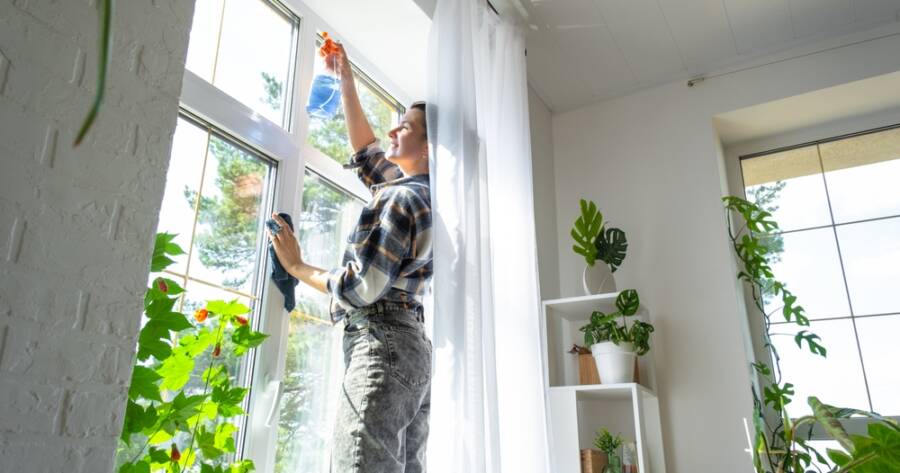Bringing nature indoors with houseplants can add a touch of serenity and a splash of green to a living space. Many people appreciate the aesthetic appeal and potential benefits of indoor plants, from potentially improving air quality to boosting mood. Understanding the basics of indoor plant care and the potential benefits can create a harmonious relationship between you and your leafy companions.
The Greening of Our Interiors
Feeling connected to nature has long been associated with positive effects on mental well-being. The inclusion of indoor plants in homes and workplaces may foster a calming environment and enhance productivity. By selecting the right plants, individuals can create not just a living space, but a thriving ecosystem within their home.
Choosing the Right Plant for Your Space
Different plants have different needs, so choosing the right one is crucial for a successful indoor garden. Consider factors like available sunlight, temperature, and humidity levels in your home. Some plants, like succulents and cacti, thrive in bright, dry conditions, while others, such as ferns and peace lilies, prefer shadier, more humid environments. Identifying the right plant for the right spot could make the difference between a struggling plant and a flourishing one.
Potential Benefits for Mental Well-being
While indoor plants are not a guaranteed solution for mental health issues, they may contribute positively to one’s overall well-being. Studies suggest that tending to plants might reduce stress and anxiety, providing a therapeutic outlet. The presence of greenery could offer a psychological uplift, contributing to feelings of peace and relaxation. However, individual experiences may vary, and plants should be seen as a complement rather than a replacement for other wellness practices.
Caring for Your Indoor Plants
The journey of nurturing indoor plants involves understanding their unique requirements for water, light, and nutrients. Engaging in regular plant care might not only foster their growth but could also become a mindful daily ritual. By investing time in their care, individuals can nurture both their plants and potentially their own well-being.
Watering and Feeding
Different plants require varying amounts of water and nutrients. Overwatering is a common error as many houseplants actually prefer their soil to dry out slightly between waterings. A good rule of thumb is to check the top inch of soil for moisture before watering again. Furthermore, using a balanced, water-soluble fertilizer occasionally might enhance growth, but it’s crucial to follow specific guidelines to prevent overfeeding which could harm the plants.
Mastering Light and Temperature Conditions
Light is a critical factor for plant health, and understanding the lighting needs of your chosen plants can prevent common problems like leaf drop or stunted growth. Most indoor plants will thrive in indirect sunlight, although some are adaptable to lower light conditions. Additionally, maintaining a stable temperature without excessive drafts is vital, as many houseplants are sensitive to sudden changes that could stress them.
Designing a Green Space
Designing an inviting and cohesive green space can transform a room into an attractive haven of tranquility. Thoughtful placement of plants can maximize visual appeal and functional benefits, while also catering to their specific care needs.
Creative Arrangement and Aesthetic
Consider the aesthetic and functional aspects of plant placement. Grouping plants with varying heights and textures could create a visually engaging composition.
Hanging plants, mounted wall gardens, or vertical plant stands provide creative ways to integrate greenery into smaller spaces without overcrowding. Thoughtful design can enhance both the functionality and ambiance of a room.
Integrating Plants into Living Spaces
Incorporating plants into various areas of the home can individualized spaces and add an organic touch. Kitchen herbs could bring freshness and convenience, while a cluster of air-purifying plants in the bedroom may enhance the sense of restfulness. Each room provides unique opportunities to employ plants that align with the lifestyle and aesthetics of its inhabitants.
Potential Health Considerations
While much emphasis is placed on the positive aspects of indoor plants, it is crucial to be aware of certain health considerations. Some plants, while beautiful, might be toxic if ingested by pets or children and should be placed out of reach.
Additionally, individuals with allergies may need to consider plants that produce less pollen or opt for hypoallergenic varieties. Careful research and planning can ensure that the indoor garden is a safe and welcoming environment for all members of the household.
Cultivating Balance and Beauty
The inclusion of indoor plants may provide a unique opportunity to intertwine natural beauty with indoor living, potentially offering emotional uplift and spatial enhancement.
While further research is needed to confirm the extent of health benefits, many find joy in the process of cultivating plants. By choosing suitable varieties and providing proper care, individuals may create a thriving partnership with nature that enriches their daily lives.

